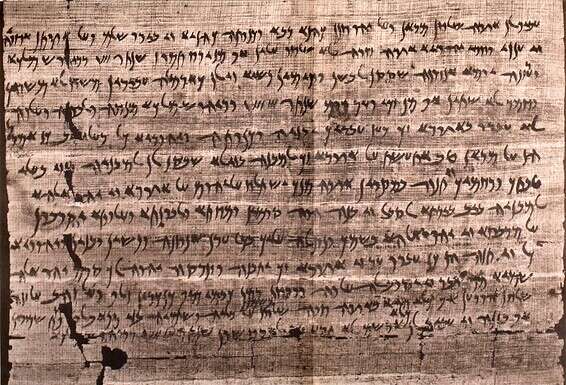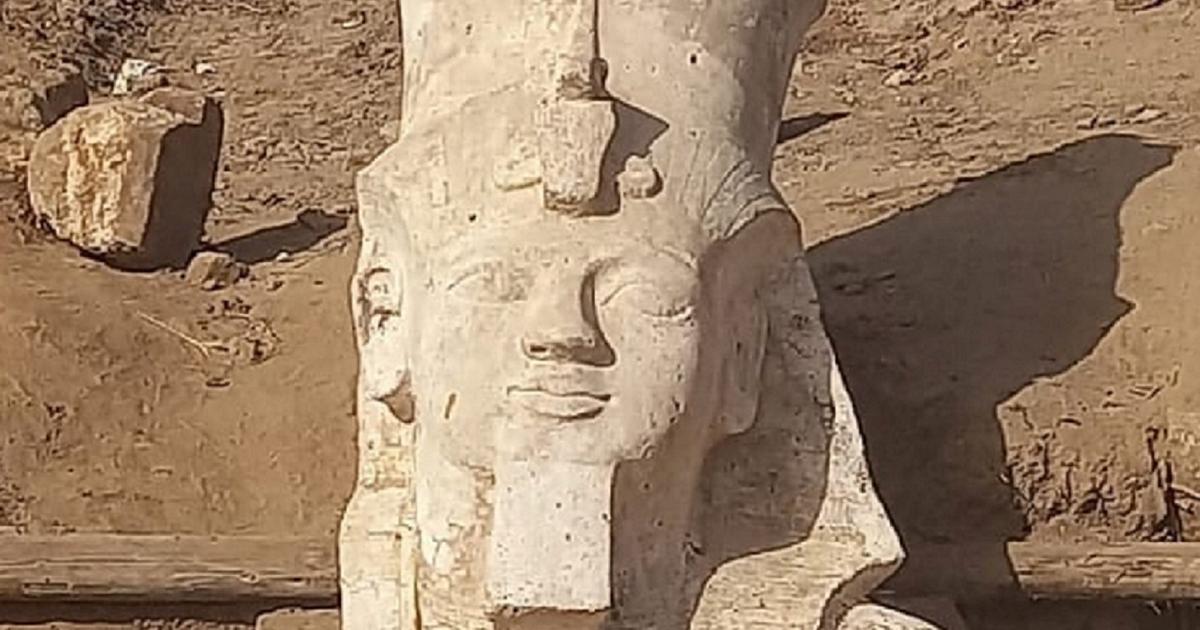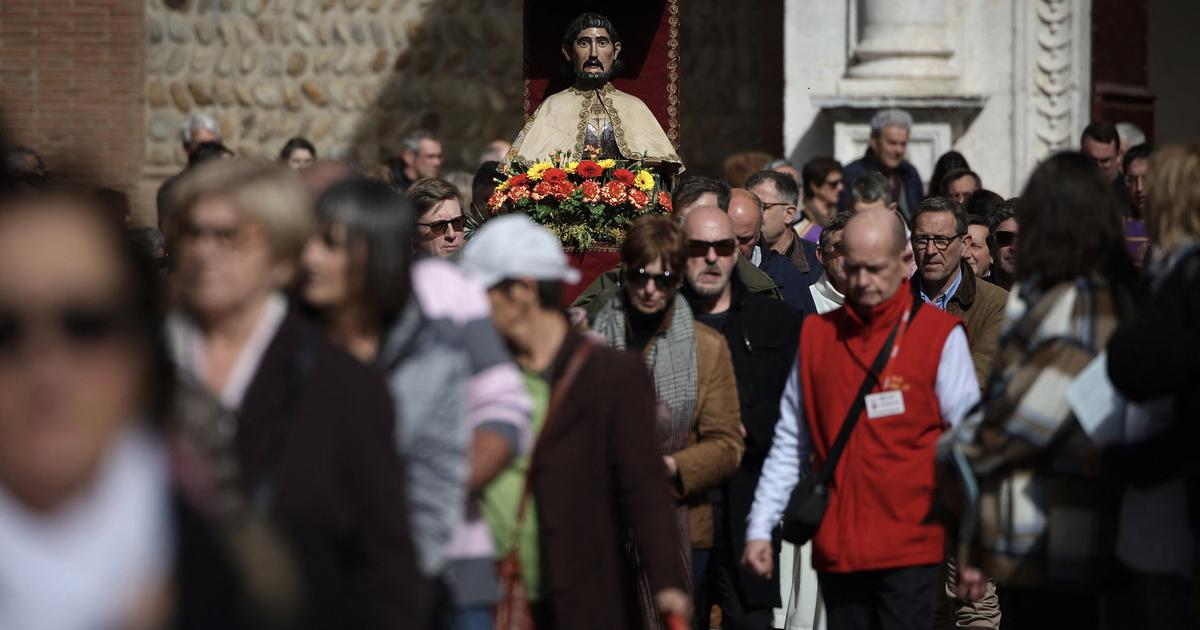"Apart from the Bible, this 'Passover Epistle' is the earliest record of the holiday customs," says Prof. Aharon Meir, head of the Institute of Archeology at Bar-Ilan University. And the customs of local Jews in daily life
"The main thing in the letter is in the instructions on how to celebrate the holiday, including things that are not familiar from the Bible."
Prof. Meir
Photo:
Richard Wiskin
The United Nations Commission of Inquiry, which arrived in Israel in 1947 to examine and propose its future political plan, was privileged to hear from David Ben-Gurion one of the most brilliant speeches of his life.
To illustrate the continuity of Jewish history, the inseparable connection between the Jewish people and their homeland and the ancient right of the Jews to the land, Ben-Gurion chose to compare the memory of the ship Mayflower, on which the first settlers from England arrived in America, with the memory of the Exodus.
Only about 300 years have passed since the Mayflower voyage, Ben-Gurion wondered to his guests, and there are almost no Americans who know how the voyage went, how many passengers were on board and what bread they ate on it.
On the other hand, even though the Exodus from Egypt is more than 3,300 years away from us, there is no Jew in the whole world who does not know exactly on what day the Jews set out, what they went through on the way and what they ate.
At the end of the 19th century, a papyrus was discovered near the Nile River, which tells of the observance of Passover thousands of years ago.
Ben-Gurion, of course, relied on Passover and its customs, which commemorate the exodus of the people from slavery in Egypt back to the Land of Israel.
The speech, and the concluding words from the Haggadah ("Shata Abdi, next year are free. Shata Haka, next year in Jerusalem") impressed the members of the delegation, most of whom were proficient in biblical texts.
However, this impression could probably have been intensified if they had known of the existence of an ancient papyrus, which is the earliest extra-biblical proof of the Jewish holiday of freedom.
This papyrus was discovered in the late 19th century in excavations on the small island of Yav. In the Nile River in southern Egypt, and was associated with the ivory trade (the name Twelve in the local language means "elephant", as well as the Greek name of the island, "Elephantine", is "Elephant Island"). From the end of the First Temple period there was a mercenary colony. Jews, and according to one intriguing hypothesis, from which the Ethiopian Jewish community later grew.
"After the destruction of the First Temple and the Babylonian exile, the kingdom of Persia rose to greatness and took over the entire ancient East, including Palestine and Egypt," says Prof. Aharon Meir, head of the Institute of Archeology. Ilan, "Jewish soldiers stationed in Bib served in the Persian army and apparently engaged in guarding the border between Egypt and Nubia (Sudan) to the south.
They left behind a cluster of papyruses and potsherds documenting various aspects of their lives.
Thus were found, for example, letters sent from one person to another, contracts, banknotes bought and sold, a writing of one of the Jewish women who lived there and more.
The papyrus, known by scholars as the Passover Epistle, dating to 419 BC, is one of these fascinating finds. "
Letter with reference
This is a letter in Aramaic, the internationally accepted language of the period in the Persian Empire, by a man named Hananiah to the Jews of the city of Twelfth, or rather, In the language of the letter itself, "To my brother Yadaniah and his friends, the Jewish corps." The letter author asks them, on the orders of the Persian king, to observe Passover and the Feast of Unleavened Bread (most scholars believe these were two adjacent holidays combined with time). 14 days for Nisan, and on the 14th between the suns they celebrated Pesach.
And from 15 until 21 Nisan Passover did, for seven days eat unleavened bread. "
Papyrus antique survived in Egypt thousands of years due to the dry climate. State of preservation of the" letter of the Passover "was reasonable but had the card a few holes, and therefore needed reconstruction and reconciliation. Professor Bezalel Porten and the late Dr. Ada Yardeni, worked on it in an attempt to recover what was written on papyrus. the success was partial - only about a third of the original bond was restored, and it is clear that it was longer. but the result obtained does not leave anyone indifferent.
"apart "The Bible is the earliest record of the observance of Passover," states Prof. Meir with admiration.
"There are dates here, instructions made and also general do not do. Some of the instructions are definitely familiar to us, but some are less familiar. The same instructions are detailed later in the letter: 'Do not do craft on the 15th and 21st of Nissan. Do not drink liquor and do not eat anything chametz look in your homes, from 14 Nisan with the evening sun until day 21 Nisan about tonight sun. and all leaven that you put in your room and in your homes signed between these days ... ''
who Hanania writes the letter, and manually, the main recipient?
"Yadaniah was one of the leaders of the Jews in the city of Twelve. Hananiah is an important figure, probably from Jerusalem. He probably had a high status in the governmental hierarchy, and some even suggest linking him with family ties to Nehemiah, the leader of Shavei Zion, who was appointed by the Persian king. Judah.
"It is difficult to determine with certainty, but there is no doubt that he was a very senior figure in the leadership of the Jewish province with Jerusalem as its capital.
It is important to add that the same Hananiah precedes the instructions in a kind of opening, in which he is hung on a tall tree and clarifies: 'From the king sent to Arshem'.
Arshem was the Persian Pasha of Egypt, meaning it is a reference 'from above' to the content of the letter. "A
letter coming from Jerusalem asks the Jews of Twelve to celebrate Passover - does this mean that the Jews of Twelve did not know the holiday before?
" We have evidence that they knew the holiday before. The letter.
Two or three older potsherds (ostracons) were found in Bib, reminiscent of Passover, although without any details, which means that the celebration of the holiday was not new to the local Jews.
If so, the main point of the letter sent from Jerusalem is in the instructions on how to celebrate the holiday, including things that are not familiar from the Bible.
"According to some scholars, there may be evidence of traditions known to us as the Oral Torah. For example, the stipulation that chametz is allowed to be stored in a separate place for use after the holiday, the requirement to purify oneself before the holiday, A different tradition regarding the manner of the Passover celebrations, and the senders of the letter in Jerusalem found it appropriate to instruct them to align themselves according to the custom in Judah.
" As a dominant Jewish community, and each conception sought to group more and more communities under it.
However, it may be an explanation other practicalities: the letter could serve as notice of the Passover at that specific month, because it was a leap year, and the duct could not know about it. "
Does this mean of which letter was a difference between Jewish customs duct and what Ezra and Nehemiah sought to lead In Jerusalem?
"There is a high probability of differences in customs.
The collection of documents of the Twelfth Jew, consisting of 175 papyruses and potsherds found so far, paints a very beautiful picture of the life of the Jews there.
In fact, it is almost the only possibility to gain a glimpse into the ancient Jewish past directly from a source that has not undergone late or trending editing.
Photographing a reliable situation, without layers of development over the next generations, and it is clear from it that what happened in Bib was different from what is customary in Jerusalem.
For example, the finding of the Ketubah Mib attests to a marriage that took place there between a Jewish man and a non-Jewish woman, at the same time as Nehemiah forbade intermarriage in Jerusalem at that very time.
However, I will emphasize that these are not different religions and beliefs, but differences in customs. "
Instructions from Jerusalem
Assuming that customs and halakhah have changed, can we know how our ancestors celebrated Passover 2,500 years ago?
"In this question, too, we will help the Jew Twelve. For the Egyptians, the twelfth island served as the center of worship for Al Khanum, described as a man with the head of a ram, and not far from the shrine to Al Khanum since the Jewish shrine! Apparently the Jews sacrificed a ram as a Passover sacrifice. Passover in the Passover Epistle means Sacrifice. Following Hananiah's instructions on how to observe Passover, the Jews of Twelve acted as they were told from Jerusalem, but the Egyptian neighbors did not like the sacrifice of the rams and destroyed the Jewish Temple of Twelve.
" , To help them in the wake of the destruction of the temple by the Egyptians, and know that the approval by the Persian government to rebuild the temple was probably given at the end of the fifth century BCE, but this approval only referred to incense, without sacrificing.
In any case, not long after that the Persian rule in Egypt was overthrown, and the Jewish community in Bib declined in size and ceased to exist. "
Was the existence of a Jewish temple in Bib known in Jerusalem?
" Absolutely.
According to other inscriptions, a clear picture emerges that everyone knew about.
It is not known for sure whether the Jewish community from the days of the First Temple Bib was founded by people who came from Judea or the Kingdom of Israel, but they brought with them traditions that a temple could be built outside Jerusalem.
On the face of it, we would think that the senior representative of the Jewish leadership in Jerusalem would avoid as much as possible the giving of a seal to offer sacrifices outside the Temple in Jerusalem, and here we got another hint that the opposite was true.
"The Bib community numbered at most a few dozen Jews, and was in a fairly remote corner of the Jewish world at the time, and despite that, a Jewish temple existed there."
The hypothesis that Hananiah's "Passover letter" could have angered the followers of God Khanum and the destruction of the Jewish temple of Twelve, remains, of course, only a hypothesis.
The chain of events following this destruction is clearer.
Another letter describes the destruction of the Jewish Temple and even indicates the date of the event - the year 410 BC, that is, 9 years after the 'Passover letter' - and its circumstances.
"The priests of the Egyptian Khanum, in cooperation with the local Persian governor Widerang, took advantage of the departure of the Persian pasha Arsham: Widerang assigned the task to his son Nafin, commander of the garrison in nearby Sven. Widerang led his Persian soldiers along with the local Egyptians, It was destroyed, and the gold vessels in it were looted. "
Emphasis on the importance of the holiday
It is not inconceivable that the Egyptians saw the destruction of the Temple as a sweet revenge, and not only on the sacrifice of rams as sacrifices among the Jews.
The Jewish temple of Twelve had a considerable history, and the people of the city mentioned it among the reasons for their petition for the restoration of the temple.
"In the papyrus sent to the Persian rulers and their brethren in Jerusalem, they raised the antiquity of the temple and the very consent of the Persian government to its existence since the conquest of Egypt," Meir explains. "When the second Canaanite, son of Cyrus the Great and king of Persia, took over The fact that the Jewish Temple was preserved was certainly remembered by the Egyptians, and not necessarily for the better. The
study of the papyrus by Prof. Bezalel Portan and other researchers led to the identification of the Jewish neighborhood with a level of accuracy beyond all imagination (the neighborhood map locates different families in the area and determines who were neighbors who) and concluded that Jews lived intermingled with others - Egyptians and Persians - near the shrine. on the basis of the documents found and based on the least discovered in the excavations the remains of the city L, increased by archaeologists suggest reconstruction of the Jewish temple there, and come to the conclusion that it resembled a rather Tabernacle.
According to Professor 'Meir, the existence of temples outside Jerusalem is no secret: "The religious worldview according to which there is the Temple in Jerusalem only, has been established against other beliefs and opinions.
Although from the days of Hezekiah and the days of Josiah there were ritual reforms designed to bring all worship to Jerusalem, but before that there were temples outside of Jerusalem.
We learn about this from both the Bible and the archeological excavations. Remains of a Jewish temple that existed until the days of Hezekiah (towards the end of the 8th century BC) were found in Arad, and a temple from the First Temple period was recently excavated, only a few kilometers from Jerusalem, which probably continued to exist. After the days of Hezekiah. "One way or another, the" Passover Epistle ", along with other documents from the Twelfth City, provide us with contemporary evidence of how traditions and ancient Jewish law looked." The Epistle and what is said in it is a spectacular scientific testimony from the past, "concludes Prof. Meir , "A testimony that emphasizes the importance of Passover for the Jewish people and its various communities from time immemorial.
This is an extraordinary expression of a Jewish tradition about a founding event - the Exodus from Egypt - and we have the proof that this was marked by the Jewish communities at least 2,500 years ago, and probably much more. "


/cloudfront-eu-central-1.images.arcpublishing.com/prisa/4FLE5PNY3VBLRCDNGWKQRJSUN4.jpg)





